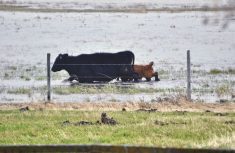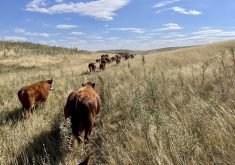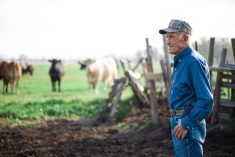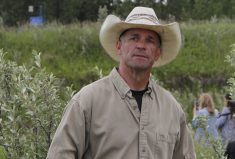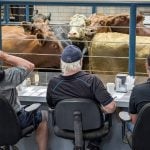When Rachel Herbert thinks about ranching, she thinks about all the women who came before her.
She thinks of her great-grandmother, pulling the ranch through the Great Depression after her husband’s death.
She thinks of her grandmother, who raised her family on the ranch, and her own mother, who found her way back to it after years away.
Read Also
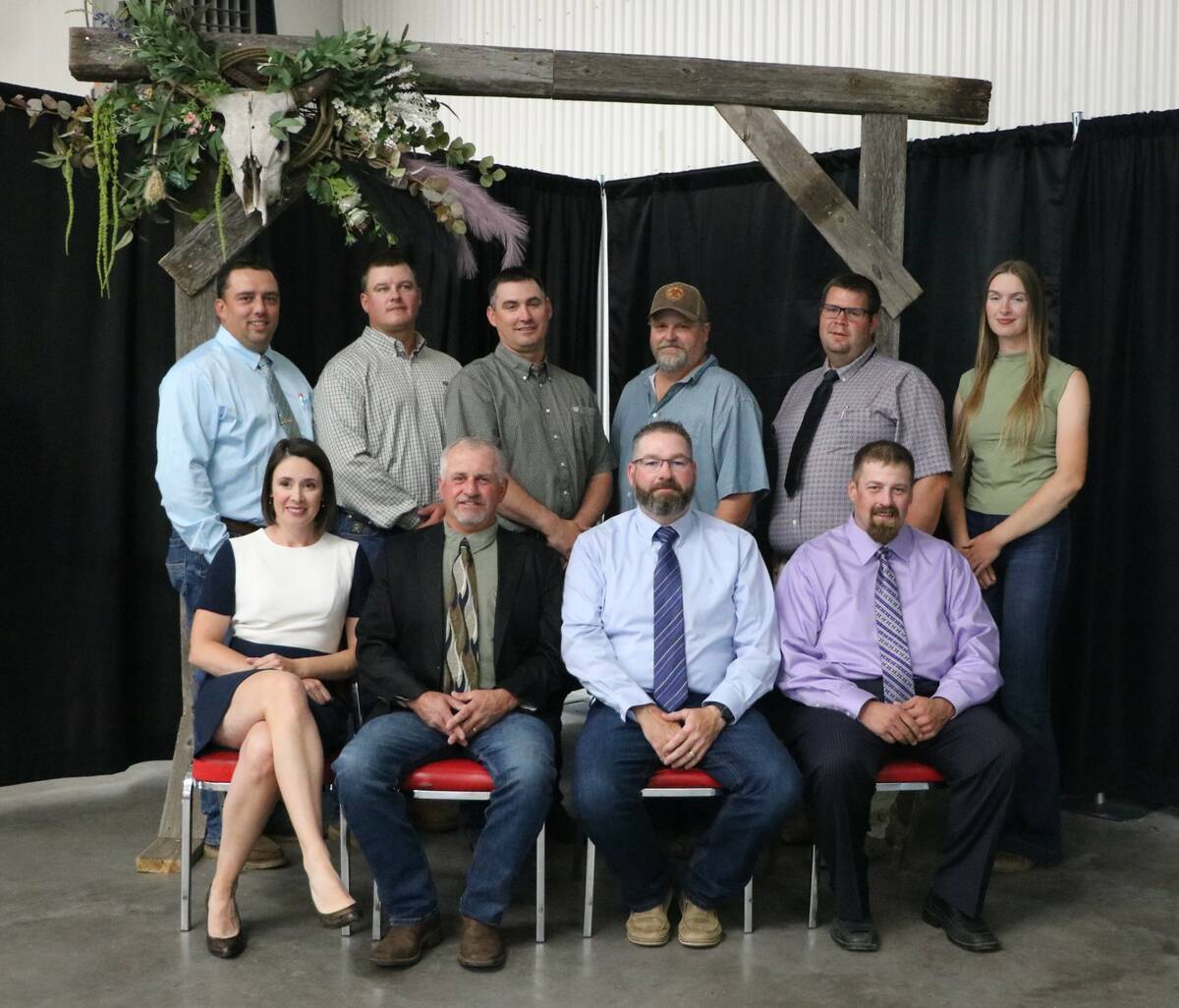
Purely Purebred: Outstanding Young Angus Breeder, Junior Limousin Herd Building Incentive winners and more
News from Canada’s purebred beef industry, including show results, board election results, research and more
Now, Herbert finds herself ranching, as well, operating Trail’s End Beef with her husband, Tyler, where they run a herd of Red and Black Angus near Nanton, Alta.
Although a lot of their operation has been built up from scratch, they also ranch on some of her family’s land that has been passed down from generation to generation, near the Porcupine Hills — wide open skies over hills and valleys, valley walls sheltering willow and poplar trees, streams running through the land.
“That’s really the place that feels like home.”
Here, Herbert rides through the land with her children, walking paths her mother and grandmother rode before her. They all have names she knows from the generations before her, and that now, her children know, too — the black path, the canyon, the heifer pasture.
“My kids know we can talk about the landscape,” Herbert says. “They’ve really got a bigger sense of scope of place that feels really real and personal to them.”
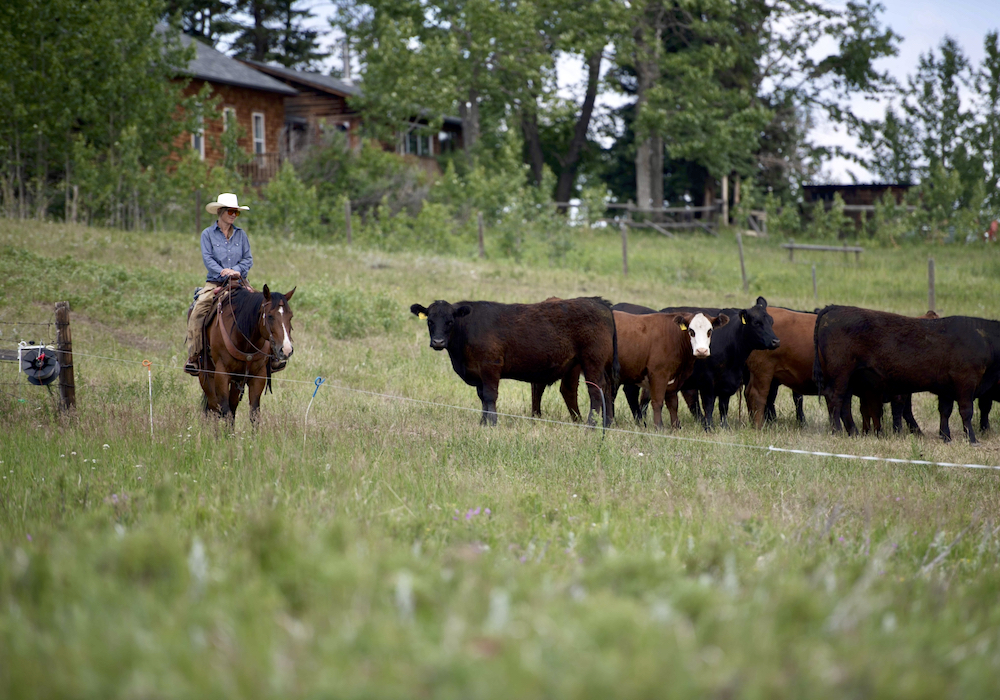
Return to the ranch
Herbert grew up in Calgary, Alta., but has roots in the rural, ranching sphere on her family’s multigenerational operation in the Porcupine Hills. Summer after summer, Herbert went back to her family ranch to spend time with her grandparents.
Years later, when she met her husband, she found herself moving away from the city and back towards the family ranch.
“I really came into the ranching community sort of with this interesting, dual perspective of knowing it was my roots and having it in my blood and knowing that I’d be making a life on the land and ranching, and also with this outsider’s perspective of I got to come to the ranch on holidays. And I had this kind of romantic perspective that was then informed by a theoretical perspective from university.”
While in her master’s program at the University of Calgary, Herbert took history classes about ranching and the West but found she didn’t get to learn much about women in ranching. What she did learn was mostly about the hardships women faced.
“There was this sense of drudgery, and that really wasn’t my lived experience,” Herbert says. “And it wasn’t what I know from my own family’s experience.”
From there, Herbert started working on her master’s thesis, a project that would one day become her book, Ranching Women in Southern Alberta. It examines the realities of women’s roles on ranches throughout history.
Myths
When Herbert started writing her book, she wanted to address and discredit some of the myths about women’s roles on the ranch.
She says one of those myths was that work was always divided by gender — women at the house, and men out working.
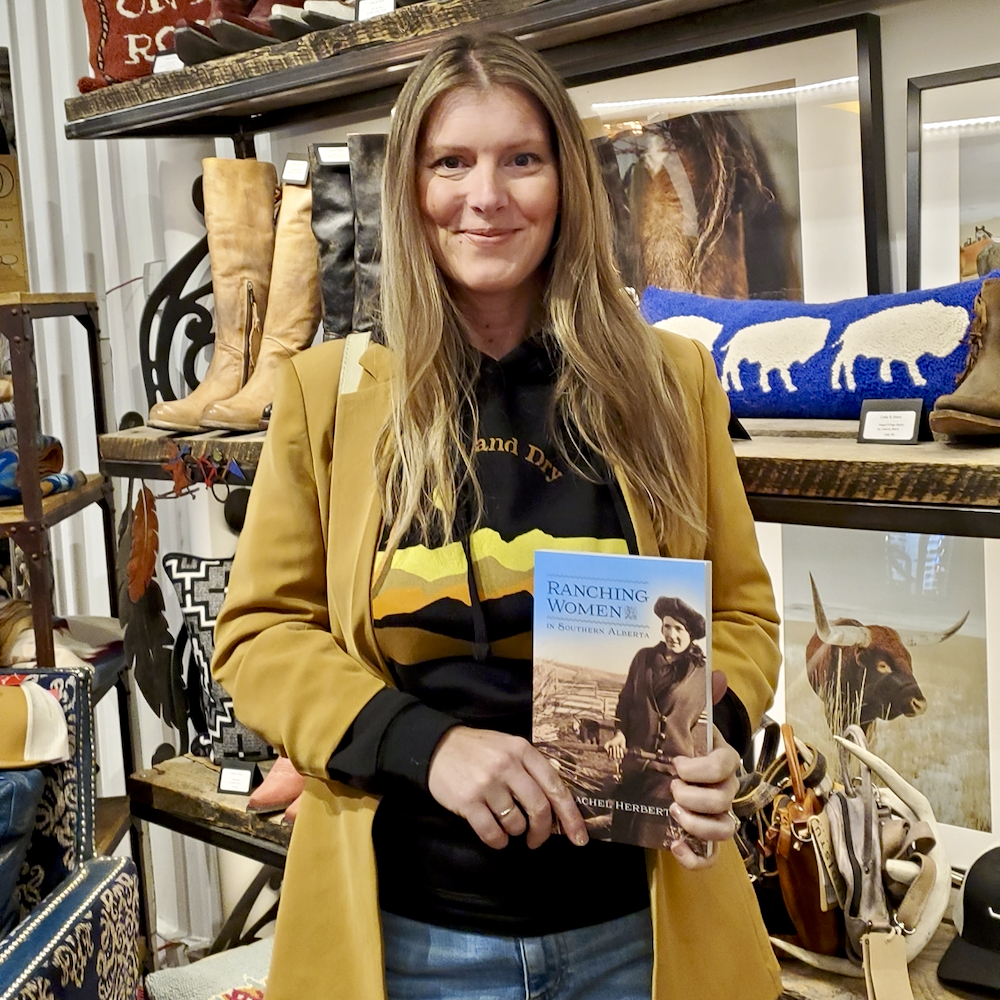
She says in reality, ranching provided women the opportunity to work outside the home, helping their spouses or other family members on the land.
“The physical nature of ranching, a lot of the work is done on horseback,” Herbert says. “And that’s a real equalizer in terms of strength and opportunity. So, I think that’s one of the myths. Women were definitely contributing more than just simply the household and barnyard work.”
She says another myth she wanted to work through at the time was the idea that ranching was isolating and lonely for women in Alberta.
She says although women were separated from other women or families, they often found connections — not with people, but with the land they lived on.
“They weren’t necessarily lonely, and one way they actually made a sense of home and place and significance was connecting with the landscape around them and forming this intimate relationship with the ranch lands.”
The names on ranches such as Herbert’s, given to locations by people generations ago, reflect this relationship. She says access to horses gave these women mobility, and they became familiar with their space by riding through it, learning all the different species of wildflowers, or naming the different places on their land.
“I think that’s how women made themselves at home and didn’t necessarily have that isolating experience.”
Then and now
Herbert says a lot of the ways women worked on the ranch 100 years ago isn’t much different from the way things are now.
She says while people believe that ranching generations ago was a heavily male-dominated sphere, what she found in her research is that it wasn’t much different from the present, with women working as partners on the ranch.
She says while there was a gender imbalance when it came to what kind of work men and women did on the ranch, women have always been engaged in the primary work on the ranch.
“It’s really women’s efforts that have contributed to the stability and longevity of the ranching industry,” Herbert says.
“I think really the thesis of my book is that women have always ranched and that’s the continuity. You know, women have always been in the saddle, in the corral or holding some type of really integral role that keeps the ranch together.”
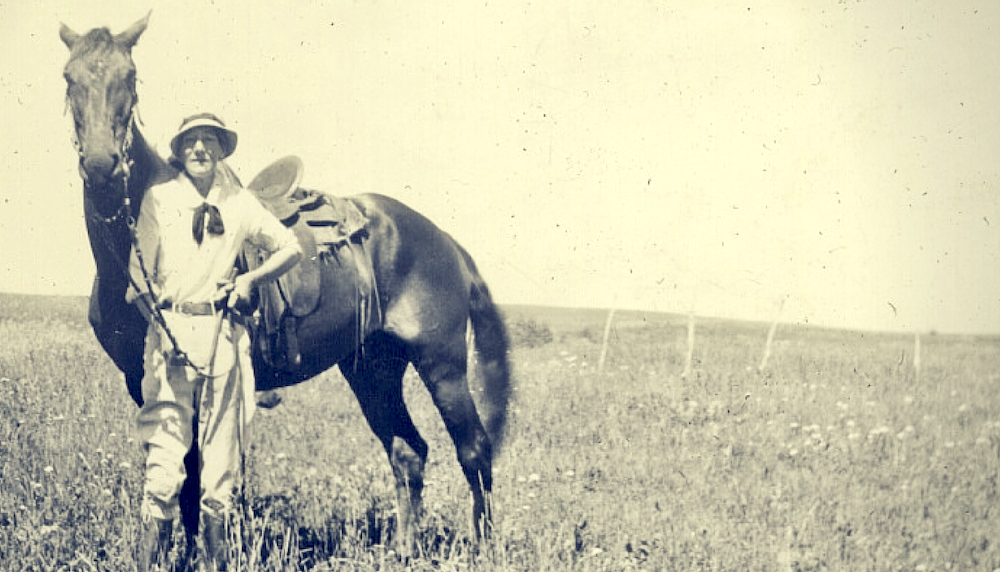
However, Herbert sees more opportunities now than back then. An example of this is in rodeo, where there is more space for women in sports like breakaway roping, barrel racing, etc.
“Back in the ’20s, in the early days of rodeo, women were competing on the big stage and in the Wild West shows,” Herbert says. “And we’re really seeing a resurgence of that. And it makes me excited for my daughter. My daughter’s 13 now and she’s a wicked little breakaway roper. Breakaway roping is getting a big stage.”
She says “cowgirl culture” is also a new opportunity, with Western wear and the rising popularity of cowgirls in the media becoming more and more common.
“There’s events like the ‘Art of the Cowgirl’ that happens in January down in Arizona that showcases just the amazing depth of skill, that also shows the long, relevant history of cowgirl culture. I think that’s just amazing.”
Stewardship
For Herbert, researching and writing her book brought her back to holidays on the ranch in cattle country; the gentle roll of the Porcupine Hills on the cusp of the Rocky Mountains, in the heat of the summer or buried in snow.
She says this project connected her to the people of her history.
“I’ve been really blessed that a sense of family and history and roots and legacy have always been real for my family.”
Now, she is the fourth generation, and her children are the fifth generation of the ranch. She says having land that comes from multiple generations carries its own kind of weight.
“With that generational sense comes a sense of responsibility, and a real sense of connection and obligation to honour our roots. And when we’re making decisions… we think to the next generation, but then we also think of how our ancestors would weigh in on the decisions we’re making every day.”
Herbert walks the land the women before her did, with her children in tow. The hills are the same. The creek is the same. The paths that have been walked by so many feet are the same. And, in so many ways, the work that Herbert does on the ranch is the same.
“I think having that sense of past and connection is a real privilege because I feel like I’m part of something much bigger than myself,” Herbert says. “And I think of our ranch in not so much terms of ownership, but more in stewardship, that this is my turn to take care of the place and make the decisions. But I really hope that the decisions I make every day are ones that the women in my past will be proud of.”
Readers can find Ranching Women in Southern Alberta by searching press.ucalgary.ca/all-books, or on Amazon. For more on Trail’s End Beef, visit trailsendbeef.com.





